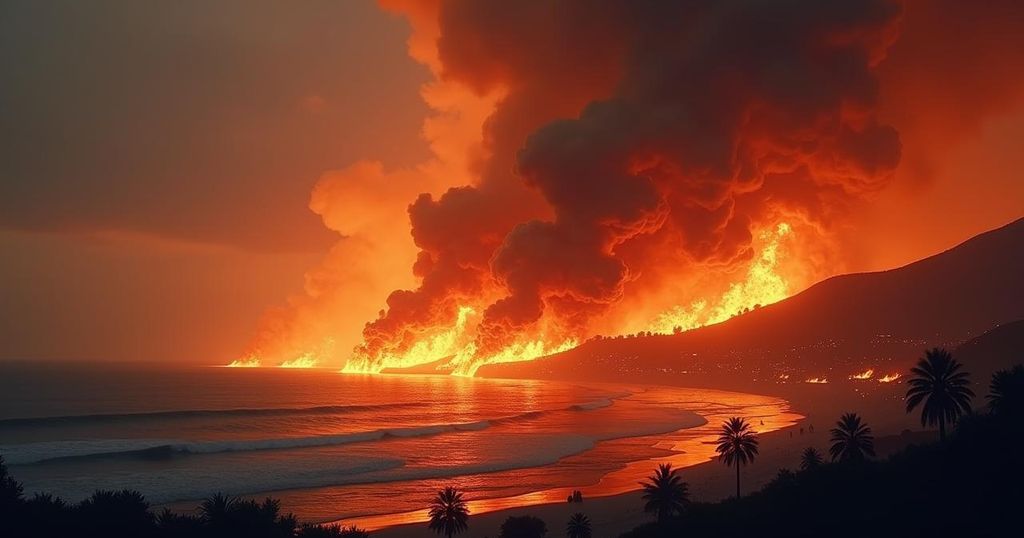The Pearl Fire near Red Feather Lakes prompted significant evacuations and emergency responses, covering 128 acres with only 5% containment initially. By September 21, 90% containment was achieved with minimal property damage. The incident emphasizes rising wildfire risks linked to climate change and its detrimental effects on forest regeneration and ecology in Colorado.
On September 16, the Northwest Larimer County Sheriff’s Office reported receiving multiple calls regarding smoke emanating from the Crystal Lakes region. Swift action by firefighters enabled them to identify the ignition source of the flames. The Pearl Fire originated from private property approximately five miles northwest of Red Feather Lakes. As the fire escalated, around 2,000 individuals were compelled to evacuate while aerial support, including helicopters and air tankers, facilitated the deployment of water and fire retardant to combat the blaze. By the following day, it was estimated that the Pearl Fire had scorched 128 acres with a mere 5% containment, which refers to the established perimeter to impede fire progression. In light of the escalating situation, Governor Jared Polis formalized a disaster emergency declaration. Thanks to the dedicated efforts of first responders, by September 21, the containment level improved to 90%, prompting the lifting of evacuation orders. Despite the fire’s threatening proximity to residential locales, only one structure reported damage. The investigation into the fire’s cause remains ongoing, with no further details disclosed at this time. Colorado has endured several devastating wildfires historically, notably the Marshall Fire in December 2021, resulting in two fatalities and the destruction of hundreds of homes in Boulder. This particular incident was exacerbated by an unusual combination of drought conditions and high wind velocities. Climate scientists predominantly attribute the increasing frequency of wildfires in Colorado to the overarching influence of climate change. As wildfires become an increasingly common occurrence throughout the American West, experts express concerns regarding forest regeneration. The elevated intensity, temperatures, and frequencies of such wildfires hinder seedlings that would typically thrive post-fire. The scorched terrain rendered barren poses a heightened risk for erosion, alongside adverse potential impacts on snowpack levels. While state agencies and environmental groups are actively involved in tree replanting initiatives and wildfire mitigation strategies, apprehensions persist regarding the long-term implications of escalating wildfire activity in Colorado.
The Pearl Fire incident serves as a critical representation of the broader issue of climate change and its adverse effects on wildfires in Colorado. The frequency and severity of these wildfires have been increasingly linked to climatic changes, including droughts and shifting weather patterns. This phenomenon poses significant challenges to forest ecosystems, particularly concerning the regeneration of flora after being subjected to intense fire events. Historical context, such as the devastation wrought by the Marshall Fire in 2021, amplifies the urgency of addressing these environmental changes and developing proactive responses to mitigate their effects.
The Pearl Fire serves as a stark reminder of the increasing challenges posed by climate change in relation to wildfires in Colorado. The successful containment of the fire highlights the efficacy of emergency response efforts; however, the lingering effects on forest regeneration raise pressing concerns for the future. As scientists continue to monitor the implications of climate change, the need for robust wildfire mitigation strategies and reforestation efforts remains critical to safeguard Colorado’s natural ecosystems and communities.
Original Source: duclarion.com






